Need a New Manure Spreader — What Size is Best?
Whether you’re running a small farm, happen to be a horse enthusiast, or running a business boarding horses, manure spreading is a big part of what you do. The question becomes “what size manure spreader is best?”. That depends largely on your specific application.
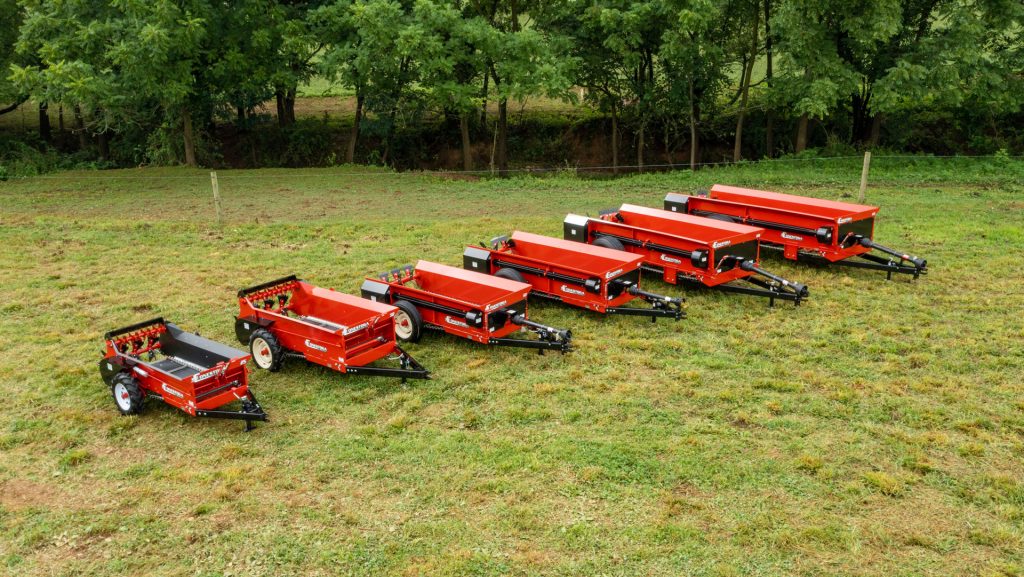
To know what size manure spreader is best, especially for your application, you have to consider some factors. How much manure are your horses producing each day? How often do you have time to spread manure each week? If you have 10 or fewer horses then you can use a 50 cubic foot box spreader, if you have more than 10 horses then you will want at least an 80 cubic foot manure spreader or larger.
Horse enthusiasts and small farms looking to purchase a manure spreader often run across the question of “what size works best?” For a simple answer, consider the following:
- How many horses/stalls do you have?
- How much of the day are they in their stalls?
- How often do you have time to spread manure?
- How far away is the area where you will be spreading manure?
How Much Manure Do Horses Produce?
The average 1,000 lb horse produces about 50 lbs of manure per day if predominantly kept in its stall. This is equivalent to about 2 cubic feet of manure. That amount estimation of 2 cubic feet per day of a stall-kept horse is how you can determine what size manure spreader is best for you. If you have horses that are out of their stalls for half the day and in their stalls for half the day then all you need to do is half your estimation to 1 cubic foot or 25 lbs of manure per day.
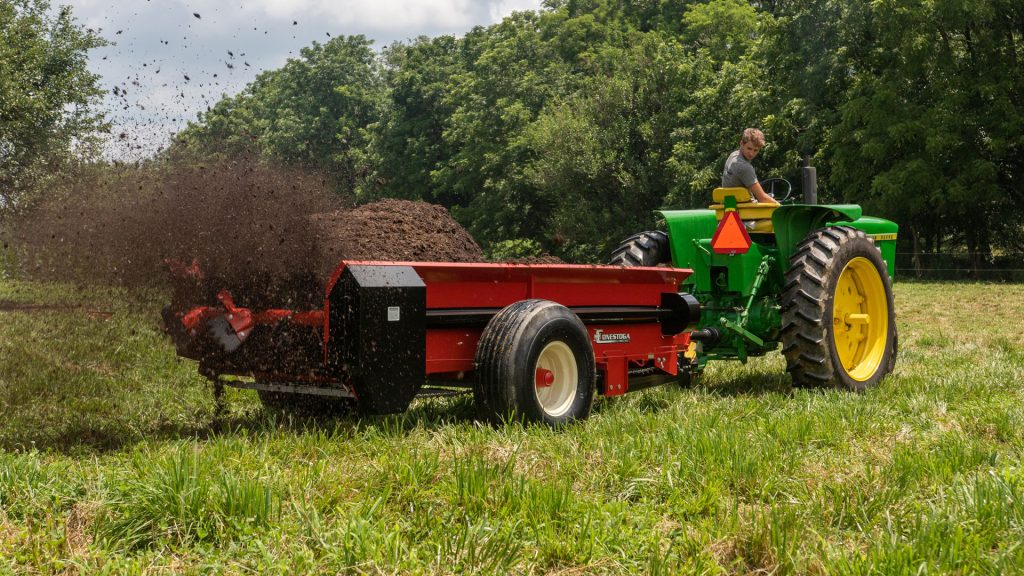
So, if you have 10 horses and they spend half of each day in their stalls they would be creating around 10 cubic feet of manure each day. If you had a 25 cubic foot capacity manure spreader then every 2 or 3 days you would need to go spread manure.
If you had 20 horses kept in their stalls all day then you would need a much larger spreader to keep that same pace of spreading. Conestoga manufactures larger box spreaders for situations like this. You can get a 125 cubic feet capacity spreader or a 175 cubic feet spreader to handle higher manure production from more stalls in your barn.
How Many Times A Week Should I Spread Manure?
The answer to this question really comes down to the volume of manure you have piling up each week and how many times you can get out to the field or pasture. Spreading manure every day does not seem like a practical use of your time. You should have a manure spreader that is the right size for your operation. If you are emptying your manure spreader 1-3 times per week that is probably the right size spreader for you. If you are going over that and having to spread 4 or more times per week just to keep up with the manure production then you should probably have a larger manure spreader, or stop feeding your horses so much!

When Is A Small Manure Spreader Best?
A small manure spreader is best when you have no more than 5 horses and however many horses you have are not producing more than 10 cubic feet of manure per day or about 250 pounds of manure per day.

Conestoga Manure Spreader’s smallest manure spreader is what we often refer to as our ATV manure spreader, the ground-driven 25 cubic foot manure spreader. The CM-25 ground-driven spreader has a heaped capacity of 25 cubic feet, so if your horses or other animals are generating around 10 cubic feet of manure per day then you’ll be spreading 2-3 times per week.
When Is A Compact Manure Spreader Best?
A compact manure spreader is best when you have between 5 and 10 or so horses. The goal we’re shooting for is to be spreading manure 1-3 times per week. More than that is too often for most people’s hard-working schedules. If you have up to 10 horses they could be filling up a small manure spreader each day, you need something larger than that in order to manage 10 horses worth of manure each day.

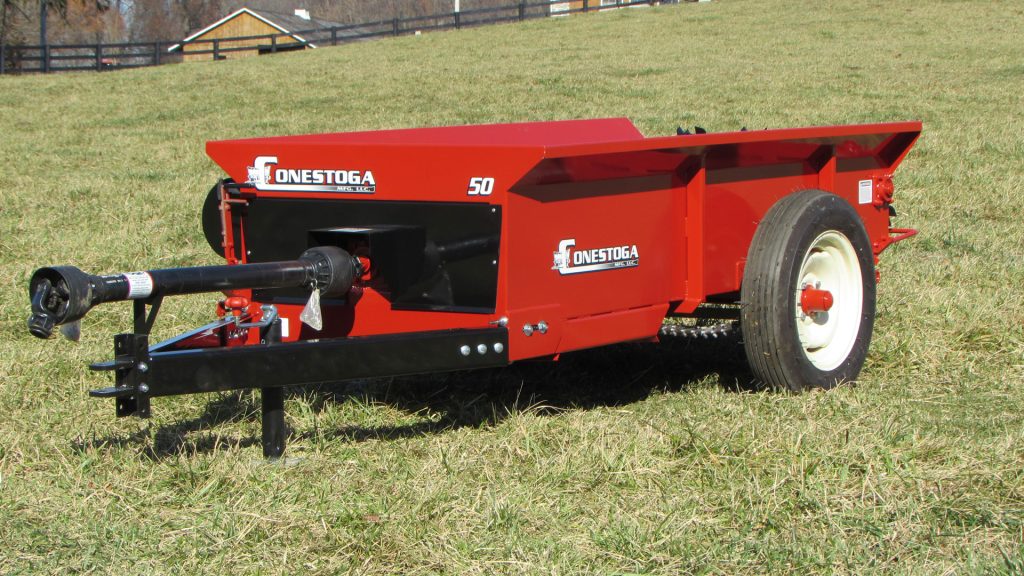
Conestoga’s compact manure spreaders are 50 cubic foot manure spreaders at heaped capacity. These spreaders are perfect if you have 5 or 10 horses. You can get a Conestoga compact manure spreader as a ground drive compact spreader or as a PTO drive compact spreader! These will allow you to hit that ideal pace of emptying your manure box spreader every 2-3 days. This allows enough time in between spreading to get your other work done.
When Is A Mid-Sized Manure Spreader Best?
A mid-sized manure spreader is best when you have 10 horses to 20 horses. Basically, if you are dealing with more than 10 horses a 50 cubic foot manure spreader is going to fill up very quickly and you will either have to spread almost every day or you will need to spread every other day. 50 cubic feet is not big enough for 10 or more horses.
What Size Manure Spreader Is Best For 10-15 Horses?
If you are dealing with 10-15 horses then an 80 cubic foot manure spreader is going to work well for you. 15 horses each producing an average of 2 cubic feet of manure a day would take 2 to 2 and a half days to fill an 80 cubic foot manure spreader. Now, if you want to spread one day a week instead of two days a week you would need to size up your spreader.
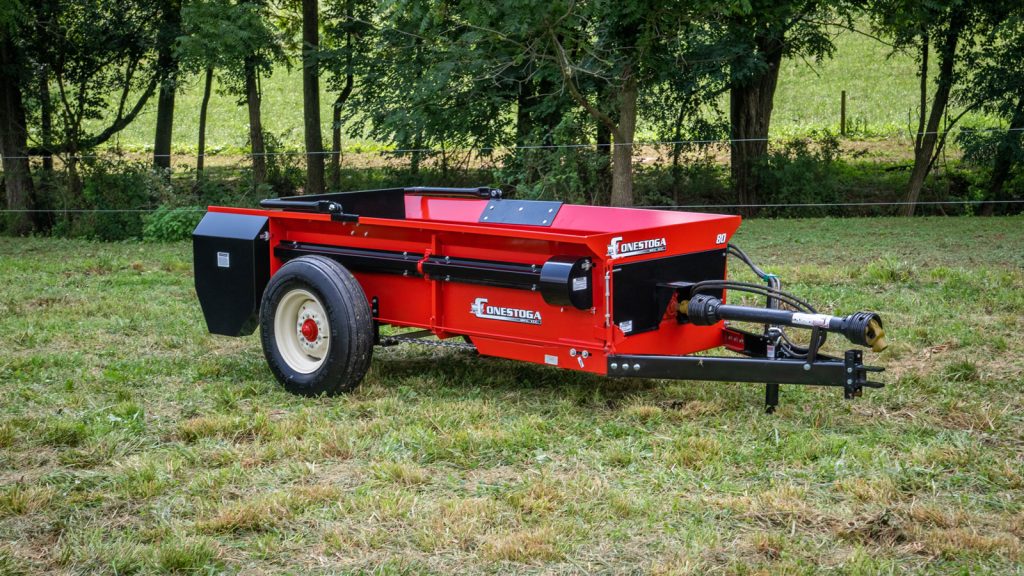
What Size Manure Spreader Is Best For 15-20 Horses?
If you are dealing with 15-20 horses then you need at least 100 cubic feet of manure spreader box capacity. Conestoga’s second-largest PTO manure spreader is a 125 cubic foot spreader. With 20 horses producing an average of 2 cubic feet of manure per day, it would take you about 3 days to fill that spreader.
What Size Manure Spreader Is Best For 20-25 Horses?
If you have 20-25 horses producing the same average amount of manure each day you could get by with a 125 cubic foot manure spreader but you also might need to size up. This will depend on how often you want to be emptying your spreader and whether or not your horses or other animals are able to roam around. If your animals are in their stalls 75% of the time or more than 125 cubic feet of spreader box capacity will barely get you through 2 days and maybe not even that. You may need to go up in size to a larger farm manure spreader.
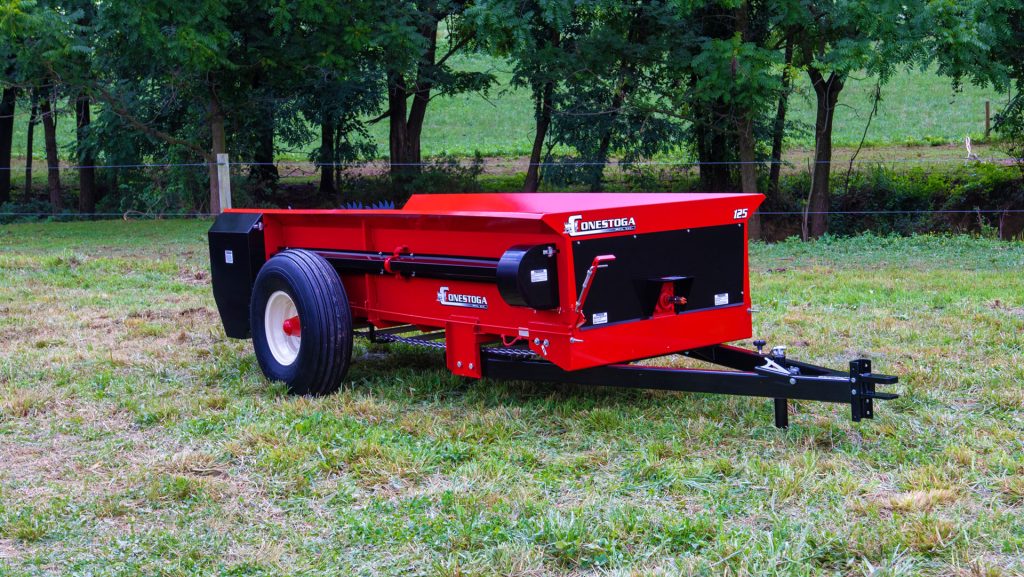
What Size Manure Spreader Is Best For 25 Horses?
If you have 25 horses or more that you care for then you really need a large PTO manure spreader to handle the manure production. Conestoga makes a large farm manure spreader that has an impressive heaped capacity of 175 cubic feet. With 175 cubic feet of capacity, you will be able to manage that amount of manure 25 or more horses produce on a daily basis. The PTO 175 farm manure spreader is the largest manure spreader built by Conestoga. It can handle more than 4,000 pounds of manure when filled to heaped capacity.
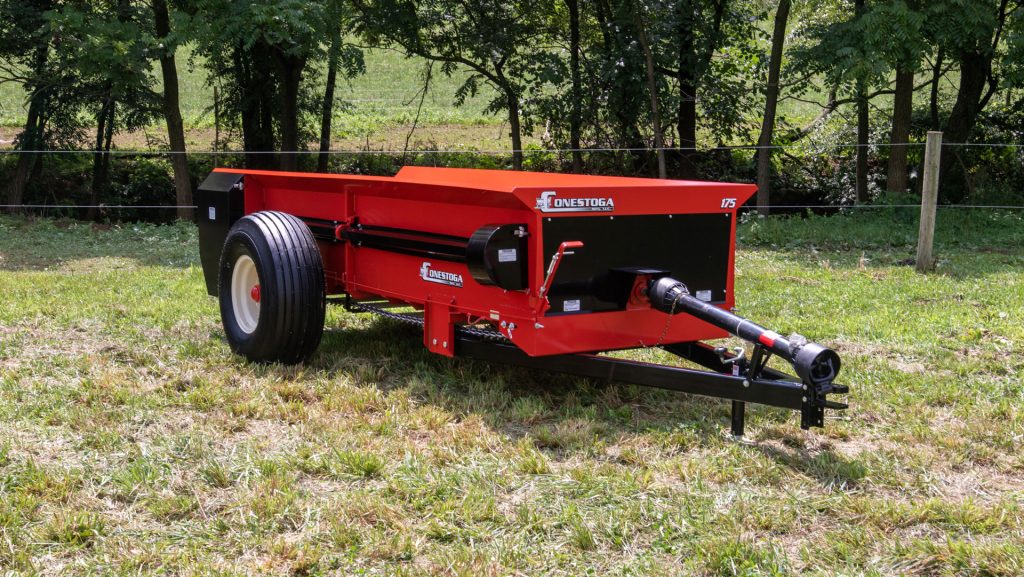
What Size Manure Spreader Is Best For You?
Taking all this information into account you can determine what size manure spreader is best for you. How much manure are you dealing with on a daily basis? How many animals are you taking care of? Are they kept in stalls or able to roam around? Knowing roughly how much manure your animals produce each day is the key determining factor.
If you have questions about Conestoga Manure Spreaders or want help deciding what size manure spreader is best for you, just give us a call or contact us through the website and we will get right back to you.
